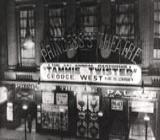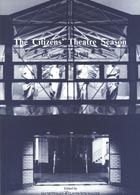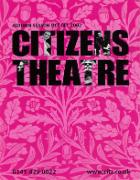Citizens' Theatre
This large collection includes correspondence, minutes, plans, photographs, presscuttings and programmes
One of the leading theatres in Britain, the Glasgow Citizens' Theatre Company was formed in 1943 by a group of Glasgow Citizens including the playwright James Bridie, who became the first President, Dr Tom Honeyman, who became the first Chairman, and the writer Guy McCrone who was the first Managing Director. They first presented their repertoire in the Athenaeum Theatre but moved to the Royal Princess's Theatre (originally opened in 1878 and famous for pantomime, melodrama and the national drama) in the Gorbals in 1945. This building was later renamed the Citizens' Theatre.
In its early years the theatre tried to promote Scottish plays, many of them being by Bridie. Bridie had hopes of founding a Scottish National Theatre and gathered together a remarkable company of Scottish actors including Duncan Macrae, Molly Urquhart, James Gibson and Stanley Baxter. One of the legendary productions from this period was the pantomime The Tintock Cup which ran for five months in the 1949-50 season.
By the 1960s the Citizens' Theatre was one of Britain's leading repertory theatres and under a succession of distinguished artistic directors, such as Callum Mill and Ian Cuthbertson, the company poured out an impressive range of work. From 1969, under the guiding hand of the triumvirate of Giles Havergal, Robert David MacDonald and Philip Prowse, the company has presented an international repertoire, winning world wide acclaim. A controversial production of Hamlet in August 1970 launched what has become known as the "Citz style", a strongly visual and visceral form of theatre, particularly suited to the production of the classic plays of the European repertoire. During this period "Glasgow" was dropped from the title of the company.
Next door to the Citizens' was the Palace. Opened in 1904, it had only a short life as a variety theatre, and was soon converted to a cinema and later a bingo hall. The Palace had an exotic, elephant-motif interior designed by Bertie Crewe, fragments of which can be seen in the foyer of the Citizens'. From 1965 to 1973, The Close Theatre Club, the experimental studio of the Citizens' and the home of many controversial plays, was situated on the first floor of a building beside the Palace.
In 1986 the Board of the Citizens' designated the Scottish Theatre Archive as the official depository for the archive of the Citizens' Theatre.
For more information see Blood and Glitter: 70 years of the Citizens Theatre.
How to find material relating to the Citizens Theatre
- Browse through a list of documents or events associated with the Citizens Theatre or use the Name search option of the Scottish Theatre Archive Search
See also
- Citizens Theatre: details of latest and future productions, plus latest news, information and photographs outlining the theatre company's history
- National Library of Scotland: Scottish Theatre Programmes database: collection of programmes, playbills and posters. These items from theatres and other venues date from the 19th century onwards


